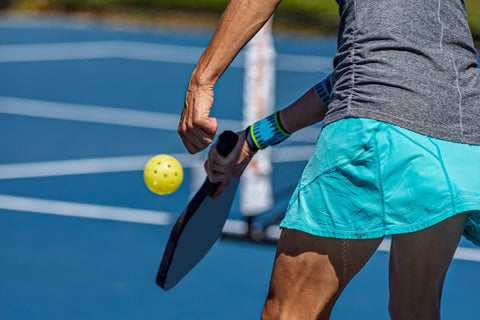When it comes to pickleball paddles, there are 3 factors to consider as a beginner in the pickleball realm.
- Pickleball Paddle Core Materials
- Pickleball Paddle Core Thickness
- Pickleball Paddle Surface Material

Learn more about choosing the right pickleball paddle for beginners.
What is a Pickleball Paddle Core?
The core is a structural gut found in all pickleball paddles, often formed into a honeycomb sheet and sandwiched between the two sides of the paddle. Pickleball paddle cores can be made from a variety of materials using different techniques and structural shapes. There are several options for core materials, but Nomex and polymer materials are the most popular today.

- Nomex Core Pickleball Paddle - Power
- Polymer Core Pickleball Paddle - Power and Control
What is the core thickness of a pickleball paddle?
The core thickness of a pickleball paddle refers to the distance between the inner edges, i.e. the depth of the inner core of the paddle. This measurement is usually given in millimeters, with thicker cores closer to 16mm and thinner cores around 11mm. Thickness can vary greatly depending on the paddle.
You can certainly look at core thickness in inches, but an easy way to think about thickness is that half an inch is close to a medium core thickness of 13mm. Moving up and down in 1/16 inch increments gets you closer to a thin and thick core from there.
For new players, it's usually better to go with a medium or thick core to help with control.
In terms of the materials, you will come across fiberglass, carbon fiber or graphite paddles today. Here's what you need to know about all three.
Of the three surface materials on this list, fiberglass is the heaviest but also the most flexible. When the ball hits the fiberglass surface, it sinks slightly and is launched off the surface of the paddle like a spring is released. Between the extra weight and the elastic effect, you can generate more force. Graphite is a lightweight yet extremely strong material that has proven ideal for many sports, but it's definitely pickleball. When a ball hits a graphite paddle, its structural integrity helps distribute the force of each hit evenly over the entire surface.
This creates a larger sweet spot in the graphite paddle, but it also comes at the cost of relative force. The carbon fiber is much lighter and stronger than graphite. Carbon fiber is technically a subtype of graphite and is widely used today. It serves as a nice balance between the most loved about fiberglass and graphite paddles.
It's the closest we've come to finding the optimal compromise between finesse and power, and is one of the reasons it's such a popular surface material for all-purpose paddles.
At this point, it's clear to me that there is no single solution to building the best pickleball paddle. And that's because every decision swings between two extremes. All 3 factors to consider above also apply to this balancing act. There may be surface materials that add power, but you can choose weights that increase control but decrease power.
Therefore, choosing the best paddle is not about balancing individual elements, but about balancing the entire paddle based on key elements.
Just like making music, every instrument affects the feel of your final composition. If one instrument behaves differently than another, the whole task can change and that's how you should think about picking the 3 elements on a paddle.
Ultimately, you should start with a basic setup and skill level. What you enjoy playing with and being able to match it to your strengths and weaknesses on the court is ultimately what separates the best paddlers from the rest.
And while no paddle is perfect, if you can tweak these 3 elements to suit your needs, at least you'll have the pickleball paddle that works best for you, and the time invested will be worth it.


